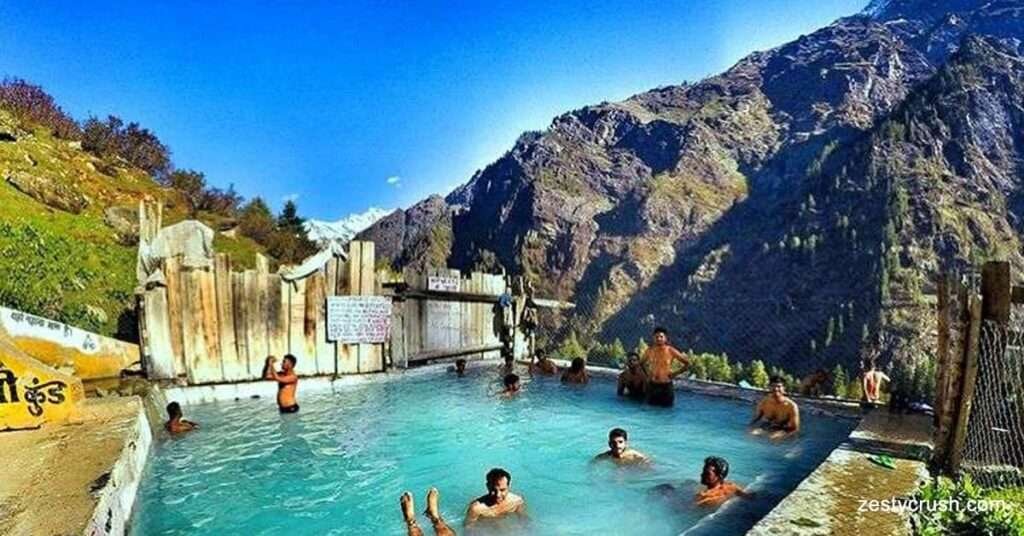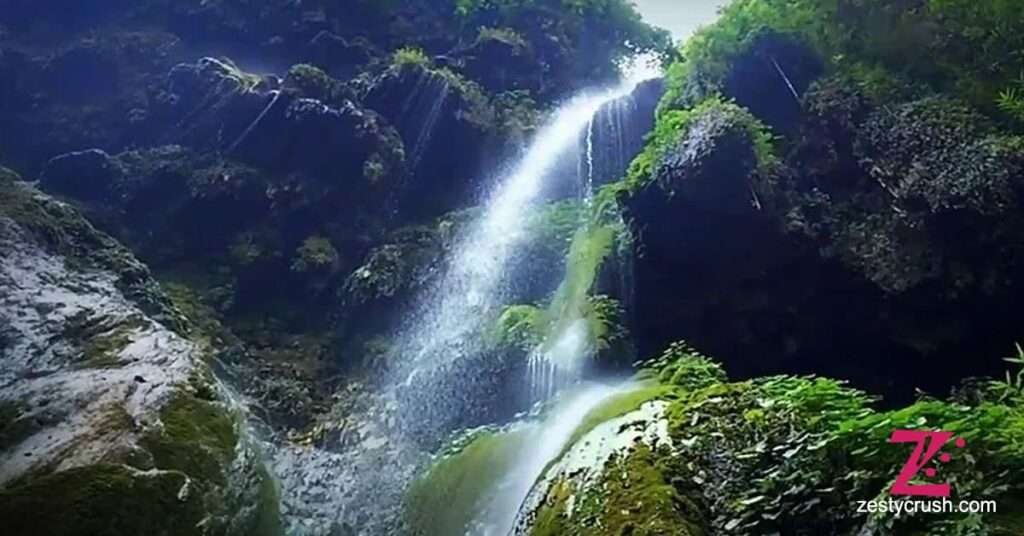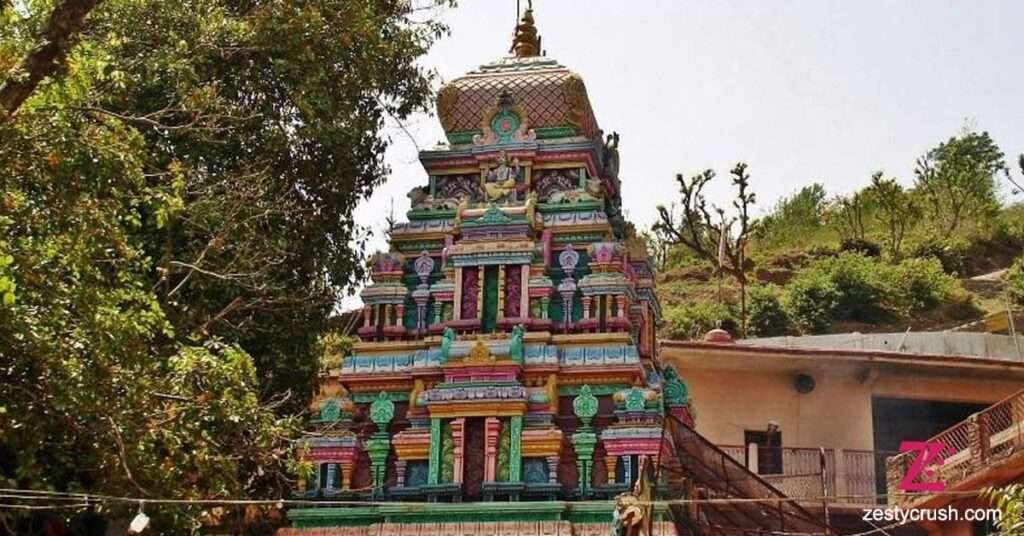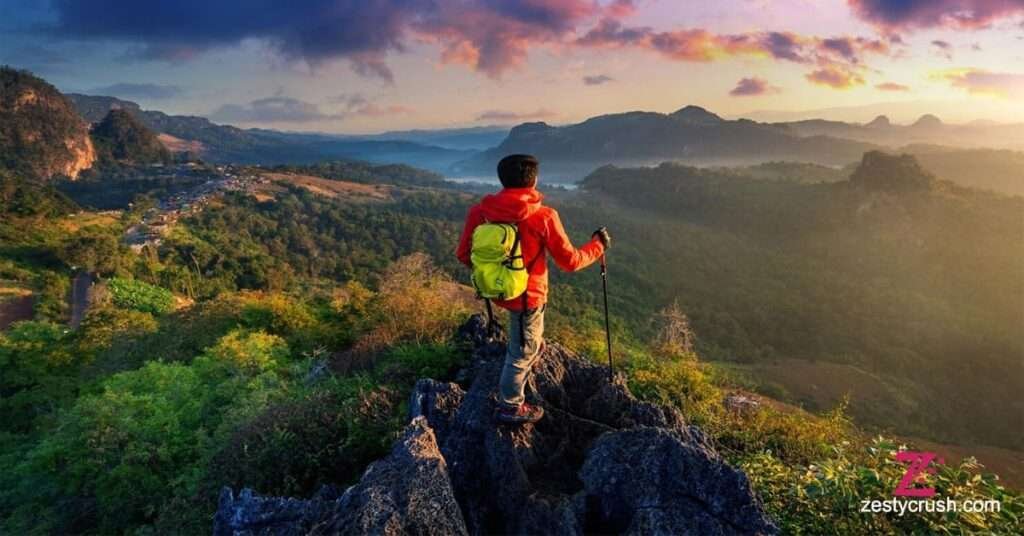Dzukou Valley Flowers: A Complete Travel Guide
Dzukou Valley is one of India most spectacular natural treasures and often referred to as the “Valley of Flowers of the Northeast.” Dzukou valley is situated on the borders of Nagaland and Manipur. This beautiful destination is famous for its seasonal blooms particularly the rare and endemic Dzukou Lily. Dzukou Valley promises an unforgettable experience to you whether you are a passionate trekker, a nature lover or want to escape the chaos of daily life.
In this comprehensive guide we will explore the Dzukou Valley Flowers, the best times to visit valley, how to reach the valley, and all the practical tips you will need for your journey.
Dzukou Valley is located on the border of Nagaland and Manipur and renowned for its rare Dzukou Lily and seasonal wildflowers. The best time to visit is from June to September for blooming flowers or December and January for snow-covered landscapes. The valley offers trekking routes through Zakhama and Viswema that providing camping opportunities and views of calm streams making it perfect for nature lovers. Nearby attractions to valley include Kohima, Khonoma, Japfu Peak, and Manipur Loktak Lake. Visitors should plan ahead, pack their essentials, and respect the valley’s pristine ecosystem. Whether you are planning a Dzukou valley trip for trekking, photography, or simply exploring, its promises an unforgettable experience. For more travel tips visit Zestycrush!
Dzukou Valley Flowering Season: When the Valley Comes Alive
The Dzukou Valley flowering season is nothing short of magical. Every year from June to September the valley is adorned with a vibrant array of wildflowers, transforming it into a painter’s palette.
Why June to September? – The monsoon rains bring life to the valley nurturing the lush greenery and encouraging a stunning bloom of flowers. The highlight is of course the Dzukou Lily, which blooms exclusively in this region.
Other Flowers to Spot- Apart from the Dzukou Lily the valley is home to wild rhododendrons, euphorbias, and a variety of seasonal alpine flowers.
Photography Tips for Flower Enthusiasts- Visit during early mornings for the best light. Use macro lenses to capture the intricate details of the flowers. Carry a waterproof camera bag during the monsoon season.
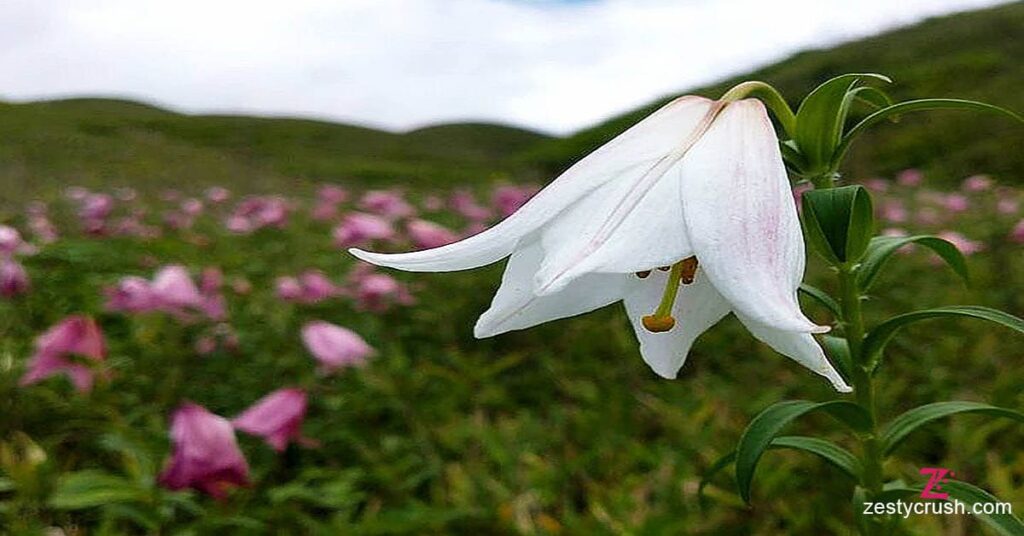
Where is Dzukou Valley Located?
Where is Dzukou Valley located? – Dzukou Valley location is at an altitude of 2,452 meters (8,045 feet) above sea level on the border between Nagaland and Manipur. The Dzukou valley is around 25 kilometers from Kohima Nagaland’s capital.
Surrounding Highlights- Nagaland is known for its rich tribal culture, festivals, and biodiversity. Manipur offers equally enchanting destinations like Loktak Lake and Keibul Lamjao National Park, which can be added to your itinerary.
Why is Dzukou Valley Special?- Unlike other popular trekking destinations in India. Dzukou Valley stands out for its pristine environment rare flora like the Dzukou Lily and its sense of tranquility.
Best Time to Visit Dzukou Valley
Your experience in the valley largely depends on the season you choose to visit. Here is a detailed breakdown:
1. June to September (Flowering Season)- This is the prime time to witness the blooming of the Dzukou Valley Flowers. Dzukou valley in July to September- during this time daytime temperatures range from 15°C to 22°C. Expect occasional rain showers.
2. October to April (Dry Season-Dzukou Valley Trek Best Time)- Dzukou valley in October to April is Ideal for trekkers as the trails are dry and safe. Dzukou valley in April takes on a golden-brown hue starting from October months. Key highlights are Clear skies, stunning views of the surrounding hills.
3. December and January (Winter Wonderland)- For those who love snow the Dzukou Valley Snow in December and January offers a surreal experience. Dzukou valley in December blanketed in snow, creating an ethereal landscape.
Caution– Temperatures can drop to 0°C or below so pack warm clothes and trekking gear.
How to Reach Dzukou Valley
Reaching Dzukou Valley is part of the adventure. Here’s a detailed guide:
By Air- The nearest airport is Dimapur Airport located about 65 km from Kohima. From Dimapur, take a taxi or bus to Kohima.
By Rail-The nearest railway station is Dimapur Railway Station which is 70 km from Kohima and well-connected to major cities like Guwahati and Kolkata.
By Road- From Kohima you need to head to one of the two trekking starting points:
Zakhama Village- The shorter, steeper route, ideal for experienced trekkers.
Viswema Village- A gentler trail that’s beginner-friendly.
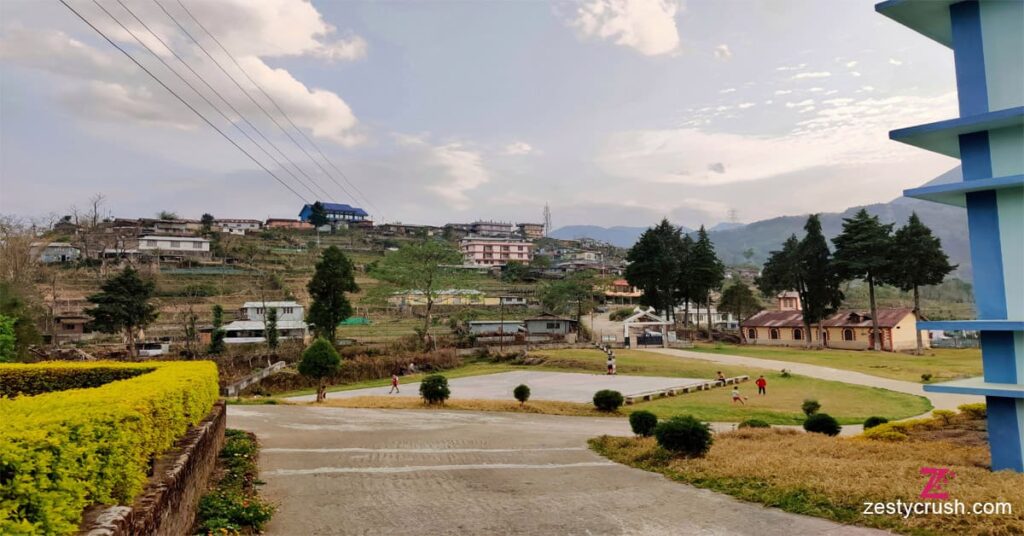
Trekking Routes- Viswema Route- A 1-hour drive from Kohima to Viswema approx. 24 km, followed by a 4–5-hour trek to Dzukou valley.
Zakhama Route– A 45 min drive from Kohima to Zakhama approx. 17 km, then trekking start. This is slightly shorter trek but involves a steeper climb.
Dzukou Valley in Winter: A Snowy Wonderland
Visiting Dzukou Valley in winter is a must for ice lovers. During December and January, the valley is often covered in a thick layer of snow creating a breathtakingly beautiful white landscape.
What to Expect- Icy trails and chilly winds. Fewer visitors making it perfect for those seeking solitude.
Trekking Tips for Winter- Carry crampons or trekking poles for safety on icy paths. Pack extra layers of clothing and insulated sleeping bags.
Exploring Dzukou Valley
Exploring Dzukou Valley goes beyond just admiring its breathtaking scenery. To truly experience its magic, travelers must delve into its trails, history, and hidden corners.
Trekking in Dzukou Valley- Trekking is the best way to explore the valley’s stunning landscapes.
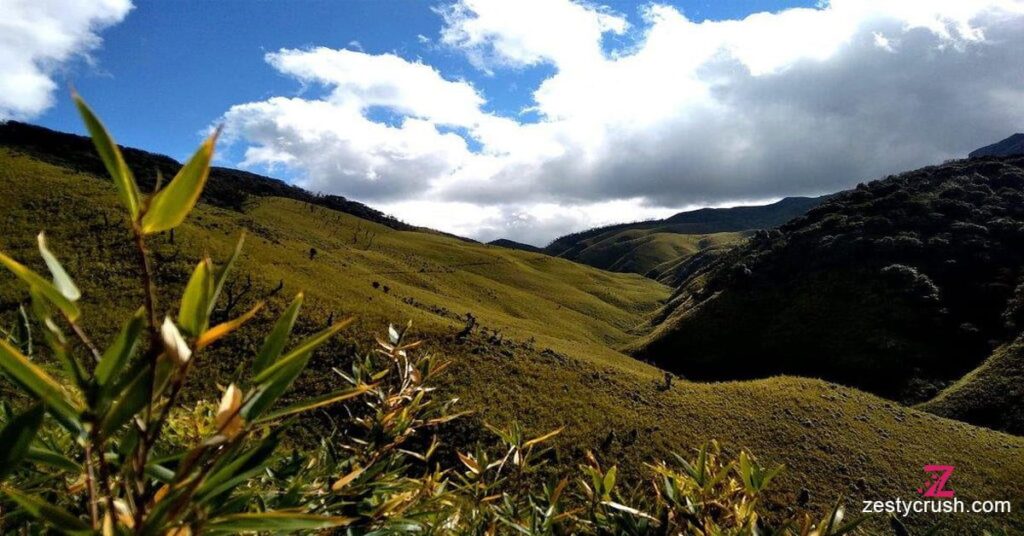
Trekking Routes
The Zakhama Route offers a shorter but steeper climb, taking about 4–5 hours.
The Viswema Route is a more gradual ascent, ideal for beginners, and takes approximately 5–6 hours.
Trail Features- Meandering pathways through bamboo forests, rocky terrains, and panoramic views of rolling hills.
Camping in the Valley- Camping overnight in Dzukou Valley is a surreal experience, especially under a canopy of stars.
Base Camp– A shelter at the center of the valley provides basic amenities like dormitories and restrooms.
Camping Tips– Bring your own tent if you prefer solitude away from the base camp. Carry a sleeping bag, warm clothes, and a portable stove.
Photography and Bird Watching- The valley’s scenic beauty and rich biodiversity make it a paradise for photographers and birdwatchers.
Flora and Fauna- Capture the bloom of the Dzukou Lily, the frosty landscape during winter, and the vibrant bird species flitting across the valley.
Best Time for Photography- Early morning and late afternoon offer the best light for capturing the valley’s essence.
Exploring Hidden Streams and Waterfalls- Small streams and waterfalls dot the valley adding to its charm.
Activity- Follow the trails leading to these hidden gems for peaceful spots to relax or meditate.
Cultural Insights- Interacting with local guides provides valuable insights into the history and significance of the valley.
Mythological Significance- Locals regard the valley as sacred and often referring to it as a place of eternal beauty.
Winter Exploration- During December and January exploring the valley offers a completely different experience as snow blankets the meadows, transforming the landscape into a white paradise.
Exploring Dzukou Valley is about immersing yourself in its tranquil beauty challenging your trekking skills, and connecting with its cultural and ecological richness.
Ecosystem of Dzukou Valley
Dzukou Valley ecosystem is one of the most diverse and pristine in Northeast India which making it a significant ecological hotspot. The valley unique combination of alpine and subtropical features sets it apart from other destinations in the region.
Flora of Dzukou Valley
The valley is famed for its seasonal blooms especially the Dzukou Lily which is endemic to this region. Apart from the lily the valley is home to vibrant rhododendrons, aster flowers, and euphorbias that carpet the rolling meadows during the Dzukou Valley flowering season. Bamboo groves dominate large parts of the landscape, contributing to the valley lush green scenery. These Bamboo groves are short and thick forming a natural maze across the terrain. Several medicinal plants and herbs also grow in the valley making it a place of interest for botanists and herbal medicine researchers.
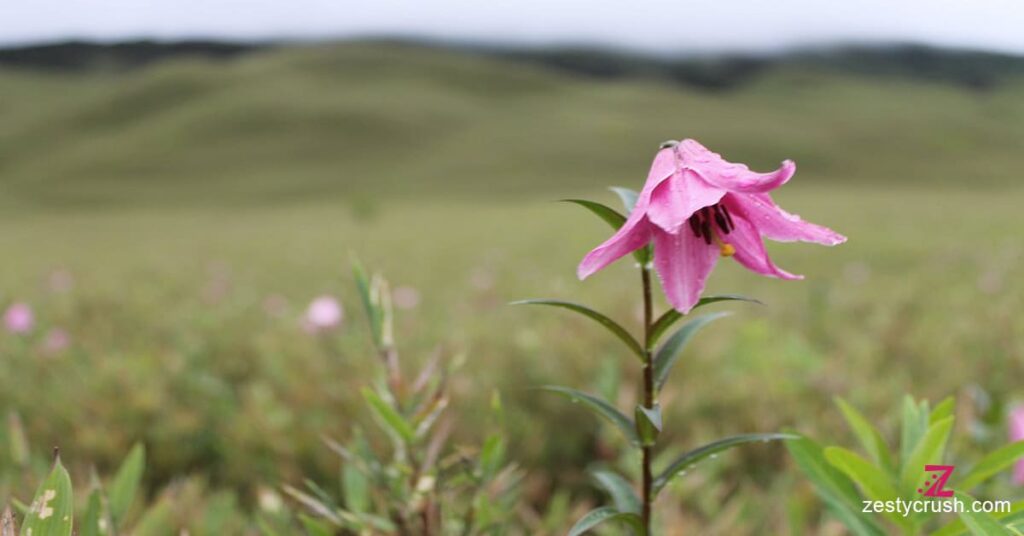
Fauna of Dzukou Valley
Dzukou valley supports a variety of wildlife including deer foxes and even the elusive Asiatic black bear although this wildlife is less visible. Bird watchers can spot rare species in the valley like hill partridges, flycatchers, and hornbills. The valley streams and marshes also host amphibians and insects which are crucial to the local ecosystem. The absence of urban development has allowed the Dzukou valley region to remain a sanctuary for these animals and free from human interference.
Water Bodies in Dzukou Valley
Small streams crisscross the valley providing fresh drinking water for trekkers. These streams eventually merge to form larger rivers downstream. During winter these water bodies freeze adding to the valley beauty when snow blankets the ground.
Conservation Importance
Dzukou Valley untouched ecosystem makes it a critical area for conservation. The biodiversity here highlights the importance of preserving fragile environments from over-tourism and exploitation. Local communities and authorities have established eco-tourism practices to ensure that visitors respect the valley delicate balance.
Dzukou Lily: A Jewel of the Valley
The Dzukou Lily is the valley’s most prized possession.
Scientific Name- Lilium chitrangadae.
Appearance– White petals with pink undertones which adding to the valley’s allure.
When to See It- Blooming peaks season is July and August during the monsoon season.
Dzukou Valley Temperature and Weather Overview
Dzukou Valley weather is pleasant most of the year but varies by season:
Summer (March to June)– Warm days and cool nights with temperatures ranging from 18°C to 25°C.
Monsoon (July to September)– Cooler temperatures ranging from 15°C–22°C, but trails can be slippery.
Winter (November to February)– Chilly weather with temperatures dropping to 0°C or lower especially in December and January.
Accommodation in Dzukou Valley
Base Camp Shelters- Available with basic dormitories with mattresses and blankets. Ideal for trekkers who want to stay close to nature.
Kohima Hotels- Options range from budget to luxury accommodations. Recommended for travelers seeking comfort after their trek.
Homestays in Villages- Stay with local families in Viswema or Zakhama to experience Naga culture.
Important Travel Tips for Dzukou Valley
Plan Your Trek- Choose the starting point (Zakhama or Viswema) based on your fitness level.
Carry Essentials- A good pair of trekking shoes, a waterproof jacket, and a first-aid kit are must-haves.
Respect Local Customs– Follow the rules and respect the local community’s way of life.
Permits- Obtain an Inner Line Permit (ILP) for Nagaland in advance.
Nearest Places to Visit Around Dzukou Valley
There are several nearby destinations worth adding to your itinerary after exploration of the beauty of Dzukou Valley. These spots showcase the cultural historical and natural wonders of Nagaland and Manipur.
Kohima- Kohima is the capital of Nagaland and it is a cultural hub with a blend of tradition and modernity. Kohima is located just 25 kilometers from Dzukou valley.
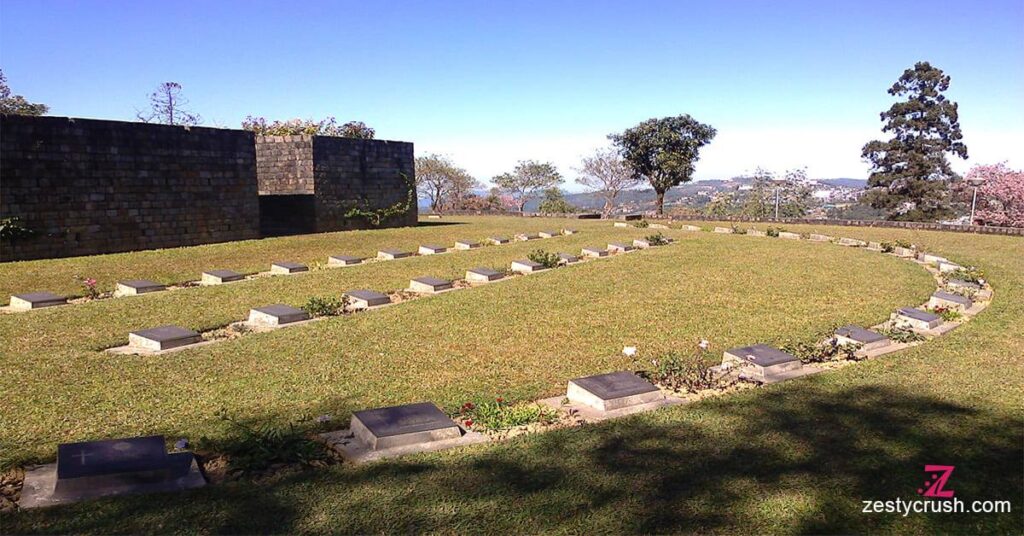
What to Explore in Kohima– The Kohima War Cemetery a serene memorial dedicated to soldiers of World War II. Kisama Heritage Village which hosts the famed Hornbill Festival every year in December showcasing the tribal culture of Nagaland.
Activities in Kohima- Shop for handcrafted souvenirs and sample local delicacies like bamboo shoot curry and smoked pork.
Khonoma Village- Khonoma is an eco-tourism success story known as India’s first green village. Located around 20 kilometers from Kohima the village promotes sustainable living while preserving its rich history.
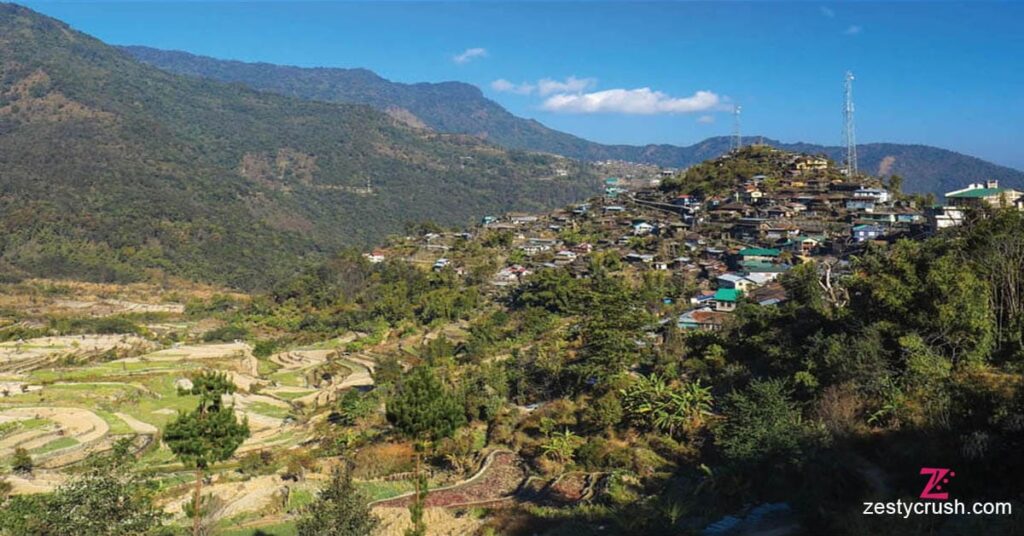
Highlights of Khonoma Village– Terraced fields ancient forts and the lush Khonoma Nature Conservation area.
Why Visit Khonoma- Experience the unique agricultural practices of the Angami tribe and take part in cultural exchanges.
Japfu Peak- Japfu Peak offers an exhilarating trekking experience for adventure seekers. Standing at height of 3,048 meters it is the second-highest peak in Nagaland and provides panoramic views of the region.
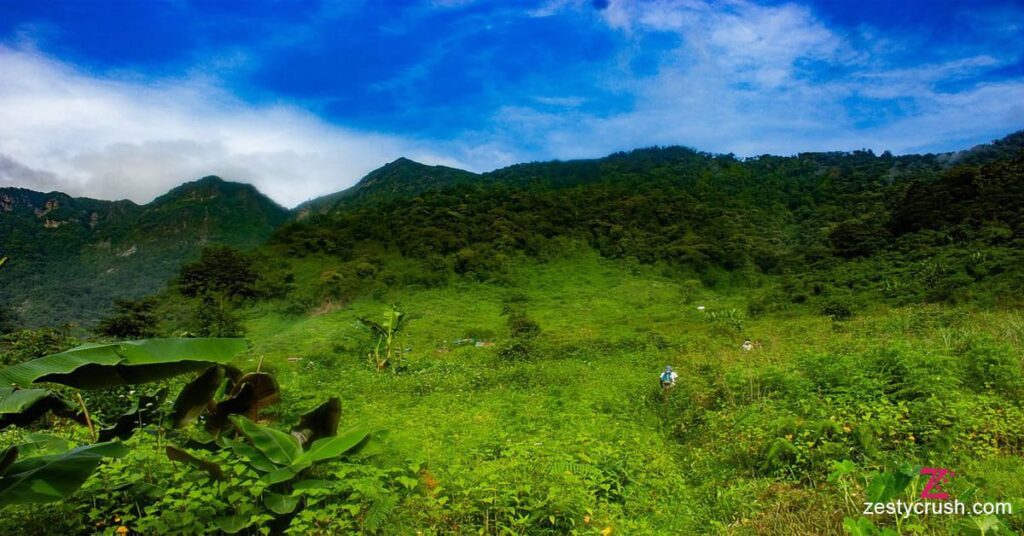
Attractions of Japfu Peak– Home to the world’s tallest rhododendron tree, which stands over 108 feet tall. Ideal for sunrise treks and photography.
Dzuleke Village- Dzuleke Village is perfect for offbeat travelers and a hidden gem near Khonoma.
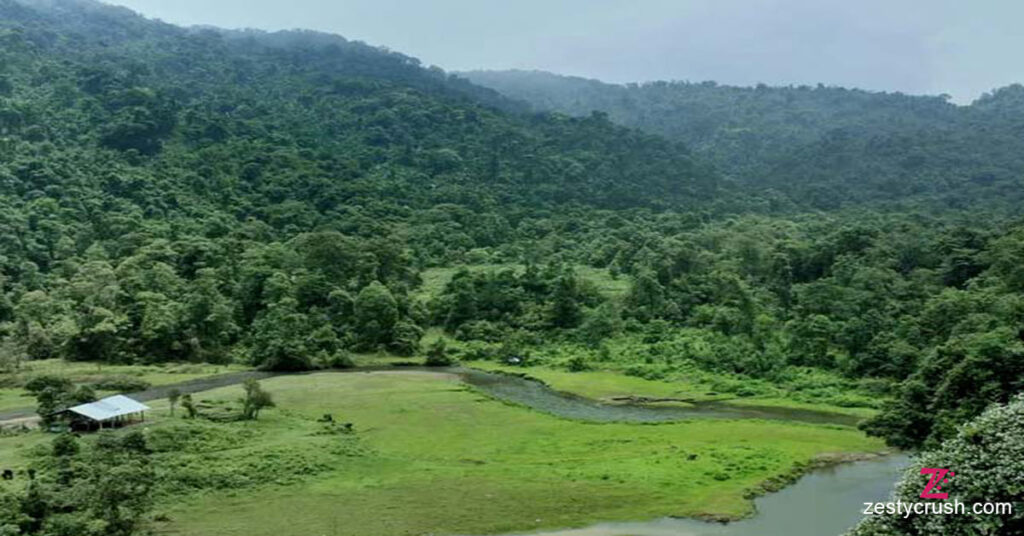
Why Visit Dzuleke Village– Known for its serene environment it is a birdwatcher’s paradise and a great spot for leisurely walks.
Activities in Dzuleke – Explore the local culture interact with villagers and enjoy traditional Naga hospitality.
Loktak Lake (Manipur)- Loktak Lake is the largest freshwater lake in Northeast India and a must-visit place if you are venturing into Manipur.
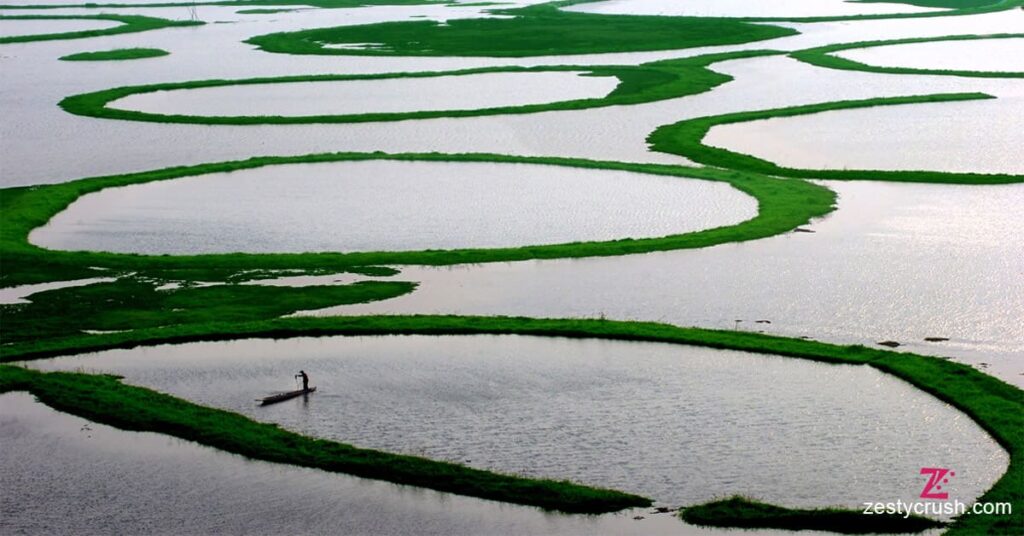
Unique Features of Loktak – Loktak is famous for its phumdis (floating islands) and home to the endangered Sangai deer at Keibul Lamjao National Park.
Visiting these nearby attractions enriches your trip to Dzukou Valley offering a mix of natural beauty adventure and cultural immersion.
Conclusion
Dzukou Valley is like entering a dream world. The Dzukou valley is a unique tourism destination for travelers. The valley offering the opportunity to observe the rare Dzukou Lily. Valley provides a incredible view of blossoming meadows and snow-covered landscapes. Dzukou Valley will provide you with memories to last a lifetime as you stroll through the misty trails and wonder at the bright blooms.
FAQ
What is special about Dzukou Valley Flowers?
The valley is home to an array of wildflowers, including the rare Dzukou Lily, which blooms only here. It’s a paradise for nature lovers during the monsoon season.
When is the best time to visit Dzukou Valley?
For flowers, visit between June and September. For snow, plan your trip in December or January.
How do I get to Dzukou Valley?
Start from Kohima and trek via Zakhama or Viswema villages. You can reach Kohima by air, rail, or road via Dimapur.
What is the weather like in Dzukou Valley?
Dzukou Valley weather varies from pleasant summers (18°C–25°C) to chilly winters, with temperatures dropping to 0°C or lower.
Are there accommodations available in Dzukou Valley?
Yes, basic dormitories are available at the base camp. Alternatively, you can stay in Kohima hotels or homestays in nearby villages.

